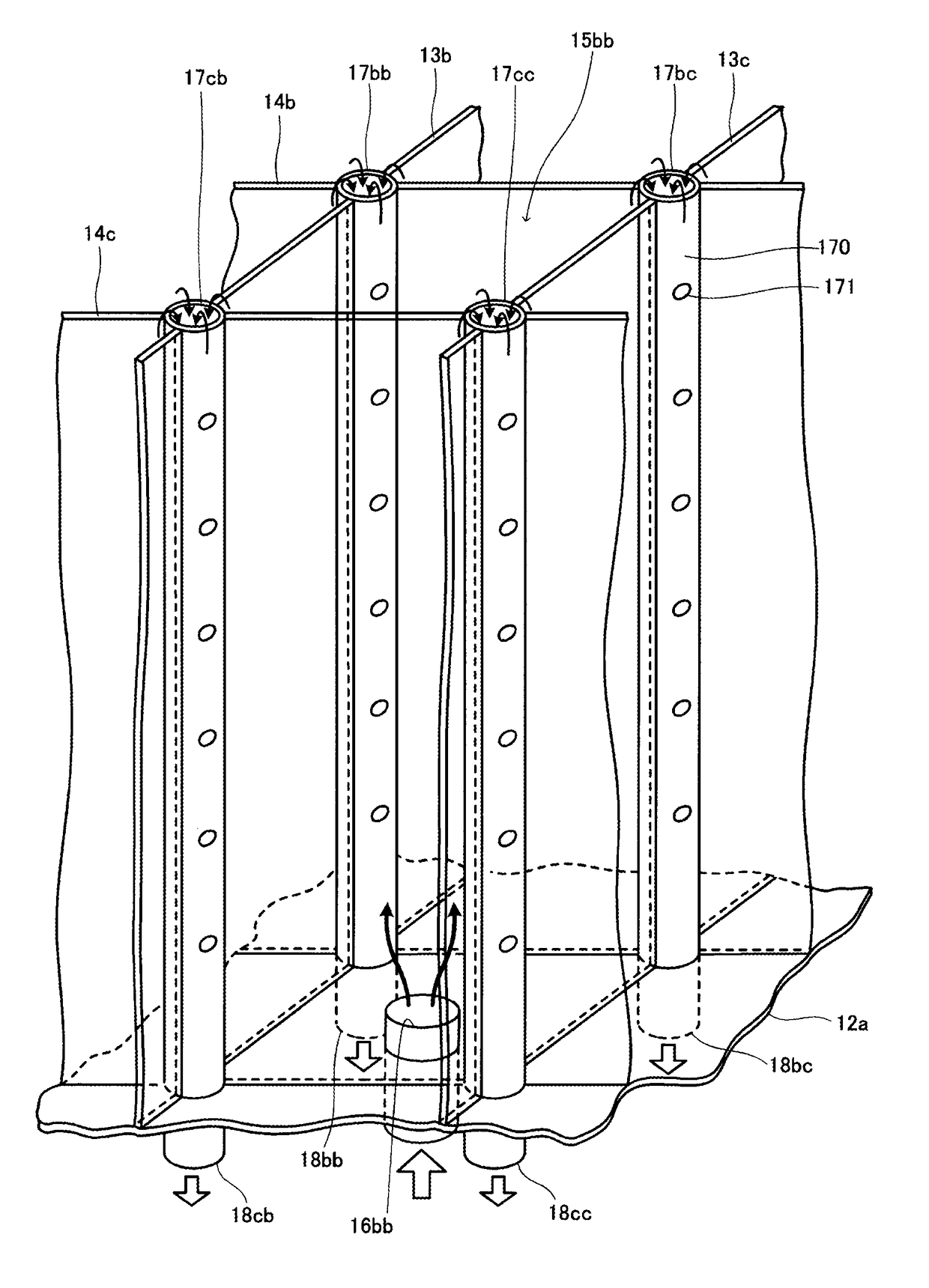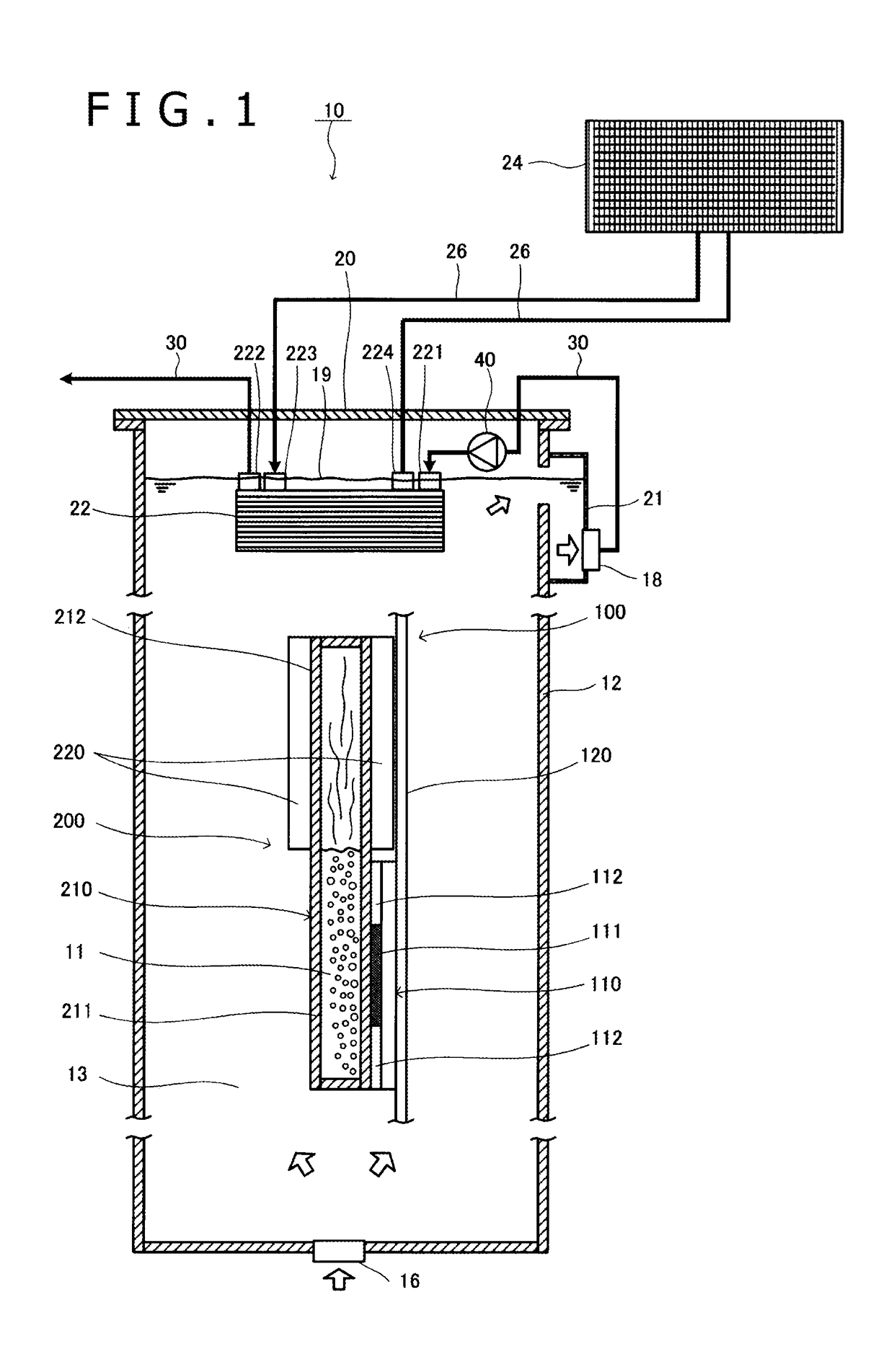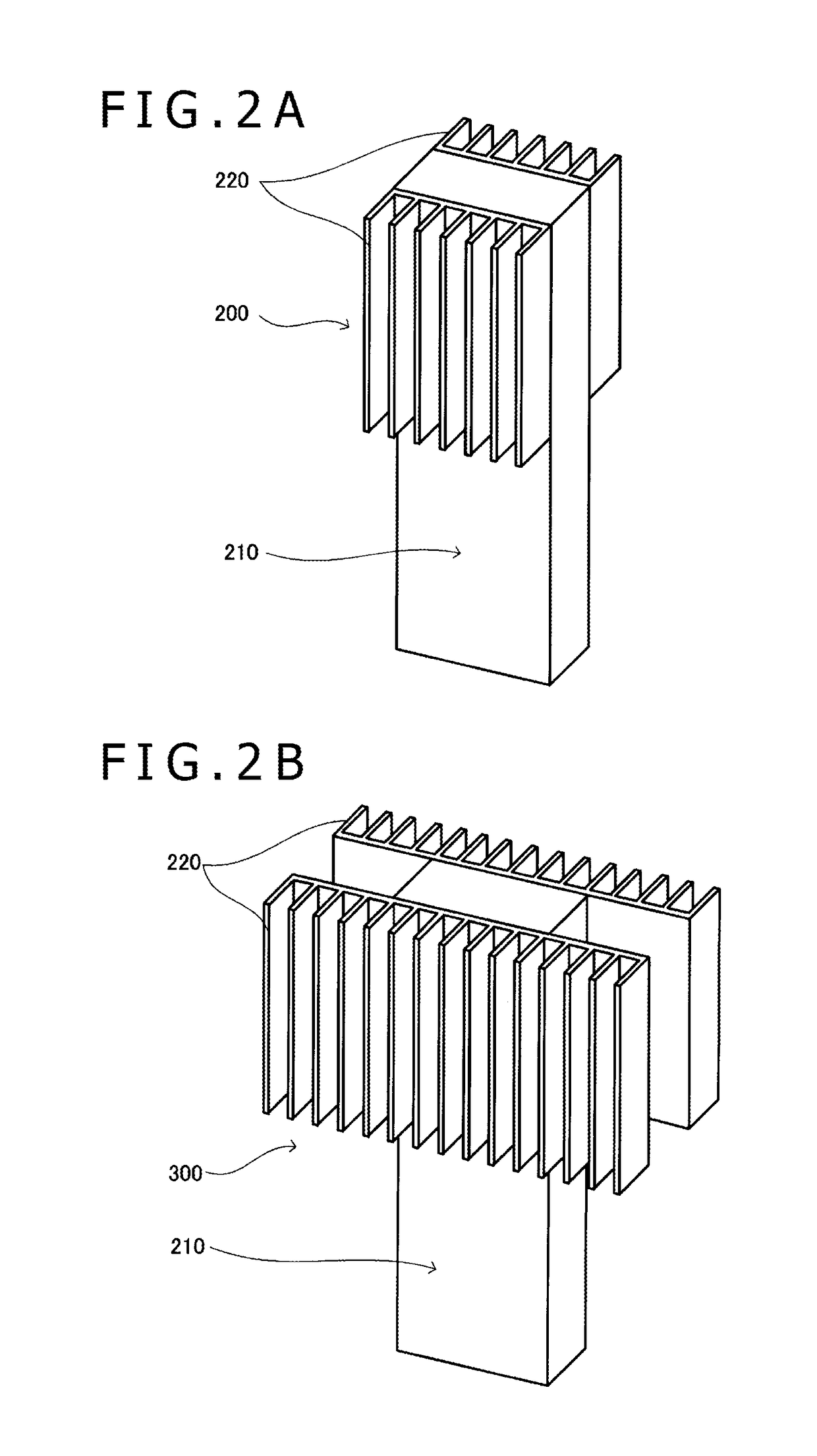Cooling system for electronic device
a technology for electronic devices and cooling systems, applied in the direction of cooling/ventilation/heating modifications, instruments, computing, etc., can solve the problems of power consumption, difficult maintenance of electronic devices, and difficulty in completely removing oil attached to electronic devices, so as to achieve efficient removal of heat, improve cooling performance of electronic devices, and reduce maintenance costs
- Summary
- Abstract
- Description
- Claims
- Application Information
AI Technical Summary
Benefits of technology
Problems solved by technology
Method used
Image
Examples
Embodiment Construction
[0043]In the following, preferred embodiments of a cooling system according to the present invention will be described in detail with reference to the drawings. In the description of the embodiments, first, the configuration of the main components of a cooling system according to a preferred embodiment will be described with reference to FIGS. 1, 2A, 2B, and 2C. In the system, an electronic device having a processor, which is a heat generating component, mounted on a board is accommodated in a cooling bath for cooling. The processor includes a die (a semiconductor chip) and a heat spreader surrounding the die. Subsequently, referring to FIGS. 3 and 4, a preferred exemplary configuration of a first heat exchanger will be described. Subsequently, referring to FIG. 5, the overall structure of the cooling system according to a preferred embodiment will be described, while only one unit, as an electronic device, including a board mounted with a plurality of processors is schematically sh...
PUM
 Login to View More
Login to View More Abstract
Description
Claims
Application Information
 Login to View More
Login to View More - R&D
- Intellectual Property
- Life Sciences
- Materials
- Tech Scout
- Unparalleled Data Quality
- Higher Quality Content
- 60% Fewer Hallucinations
Browse by: Latest US Patents, China's latest patents, Technical Efficacy Thesaurus, Application Domain, Technology Topic, Popular Technical Reports.
© 2025 PatSnap. All rights reserved.Legal|Privacy policy|Modern Slavery Act Transparency Statement|Sitemap|About US| Contact US: help@patsnap.com



